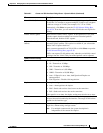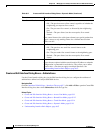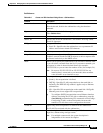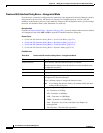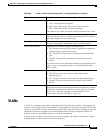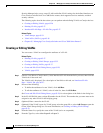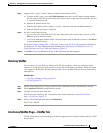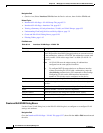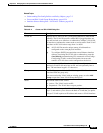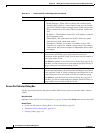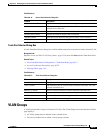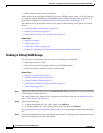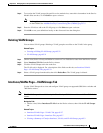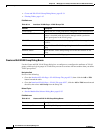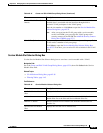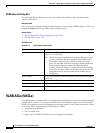
65-29
User Guide for Cisco Security Manager 4.4
OL-28826-01
Chapter 65 Managing Cisco Catalyst Switches and Cisco 7600 Series Routers
VLANs
Related Topics
• Understanding FlexConfig Policies and Policy Objects, page 7-2
• Create and Edit VLAN Group Dialog Boxes, page 65-34
• Interface Selector Dialog Box—VLAN ACL Content, page 65-43
Field Reference
Table 65-11 Create and Edit VLAN Dialog Box
Element Description
VLAN ID Displays the VLAN ID if one is configured. Otherwise, enter the ID
manually. The VLAN ID specifies where 802.1Q tagged packets are
sent and received on an interface or subinterface; without a VLAN ID,
the interface or subinterface cannot send or receive traffic. Each VLAN
must have an ID. Valid values range from 1 to 4094.
Note All VLAN IDs must be unique among all subinterfaces
configured on the same physical interface.
Tip To configure DOT1Q encapsulation on an Ethernet interface
without associating the VLAN with a subinterface, enter the
vlan-id dot1q command using CLI commands or FlexConfigs.
Configuring VLANs on the main interface increases the
number of VLANs that can be configured on the device.
Name Enter a name for the VLAN, or view the VLAN name if you entered one
previously. Each VLAN must have an ID, and can optionally have a
name. The maximum length is 32 characters.
Group The VLAN group to which the VLAN belongs. A VLAN can be
associated with one group only.
You can associate the VLAN with an existing group, or select Add
Group to open the Create VLAN Group dialog box.
Status The current status of the VLAN:
• Active—The VLAN carries traffic.
• Suspended—The VLAN does not pass packets.
Type Indicates whether the specified VLAN is configured for Layer 2 or
Layer 3, and enables you to choose the kind of VLAN that you prefer.
A Layer 3 VLAN requires an IP address and creates a VLAN interface.



